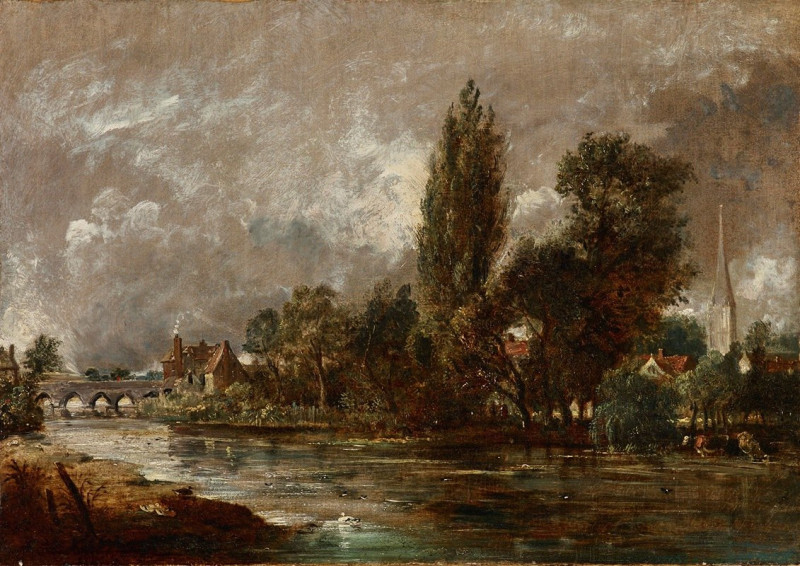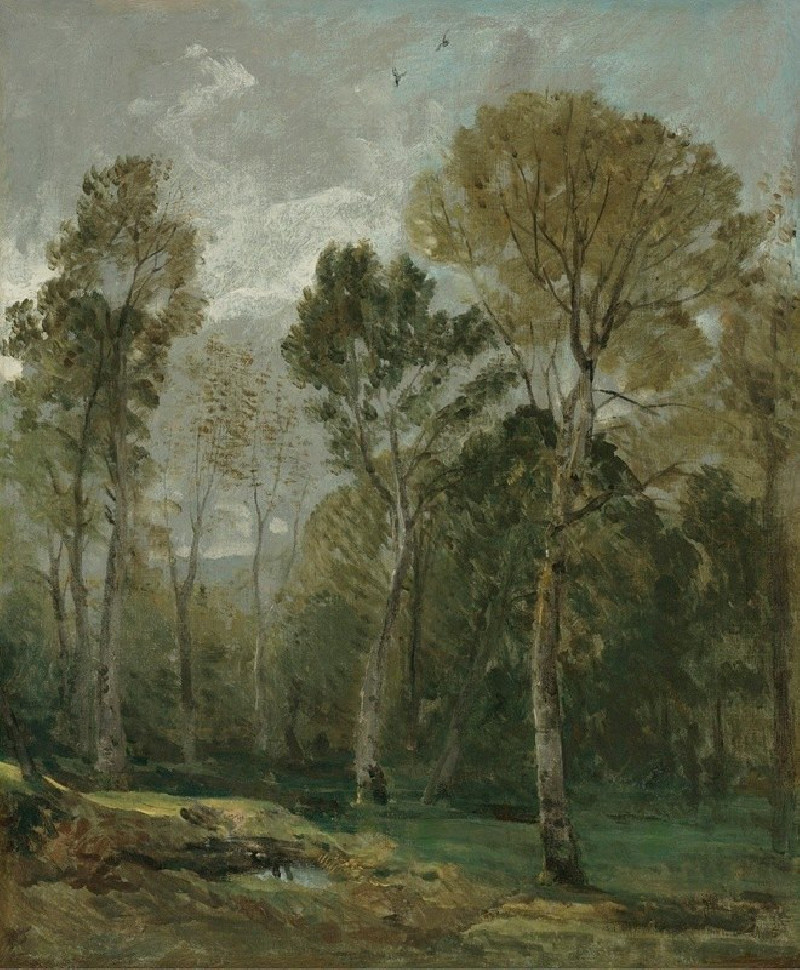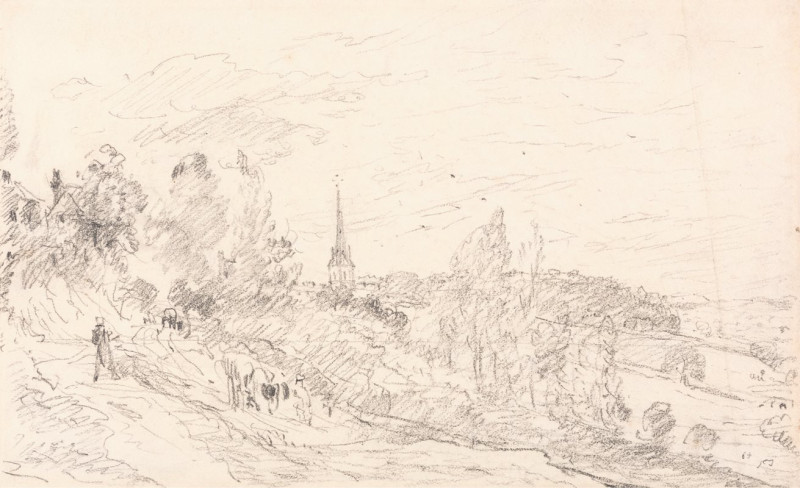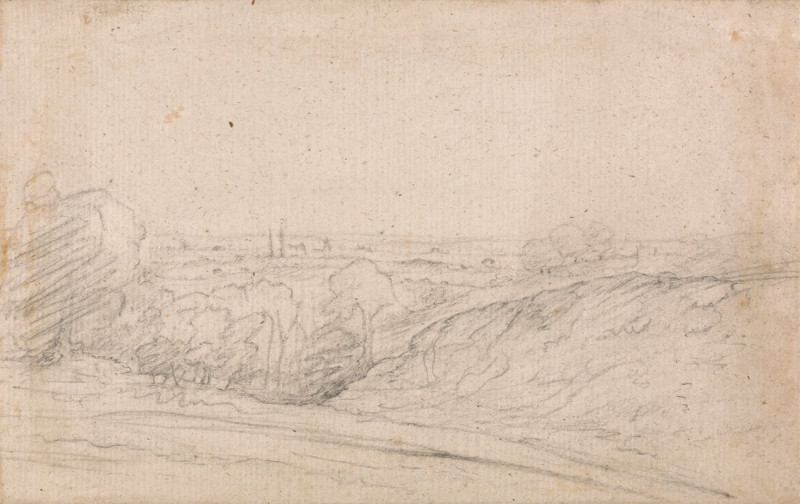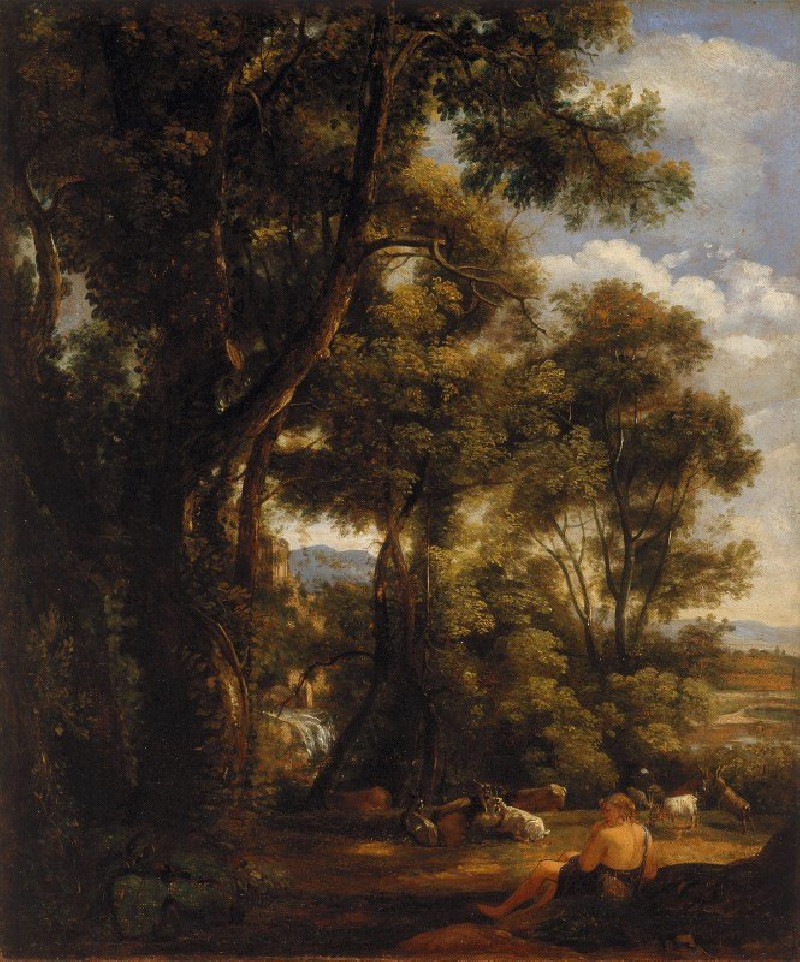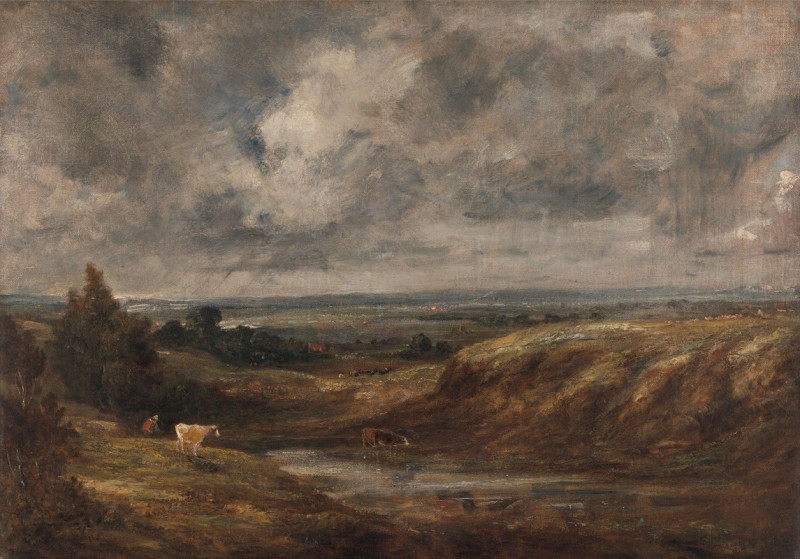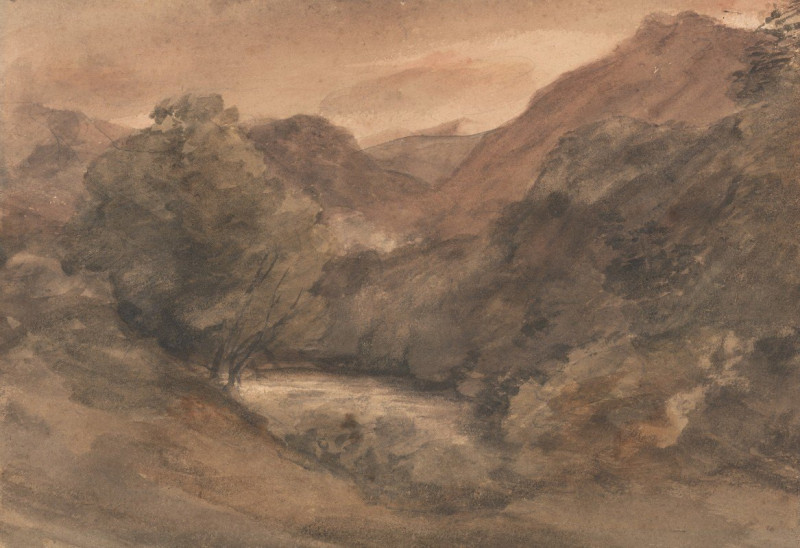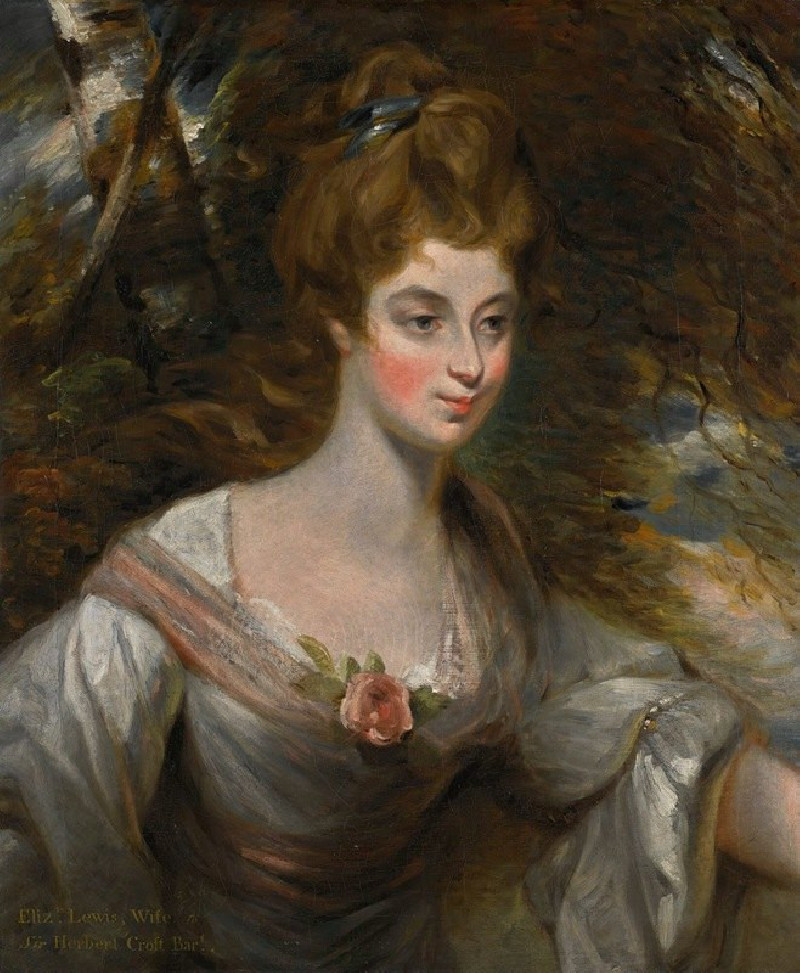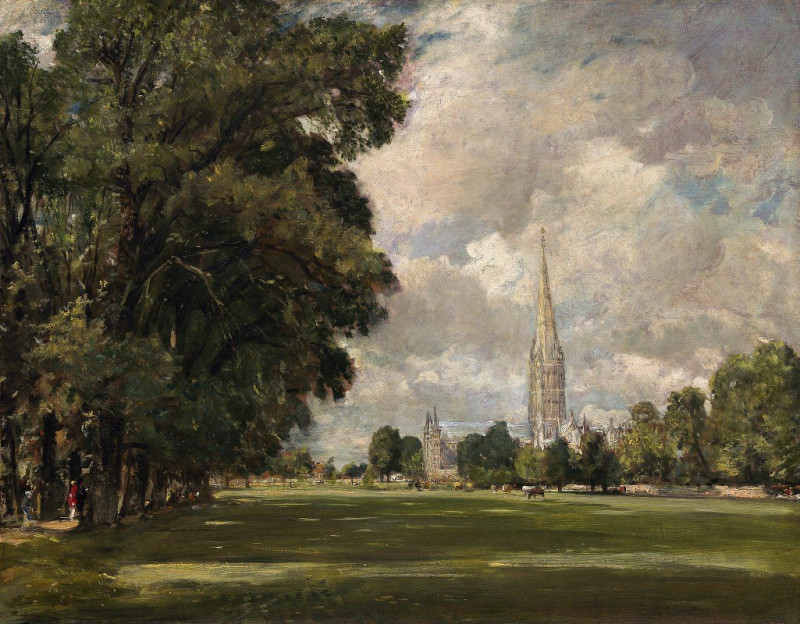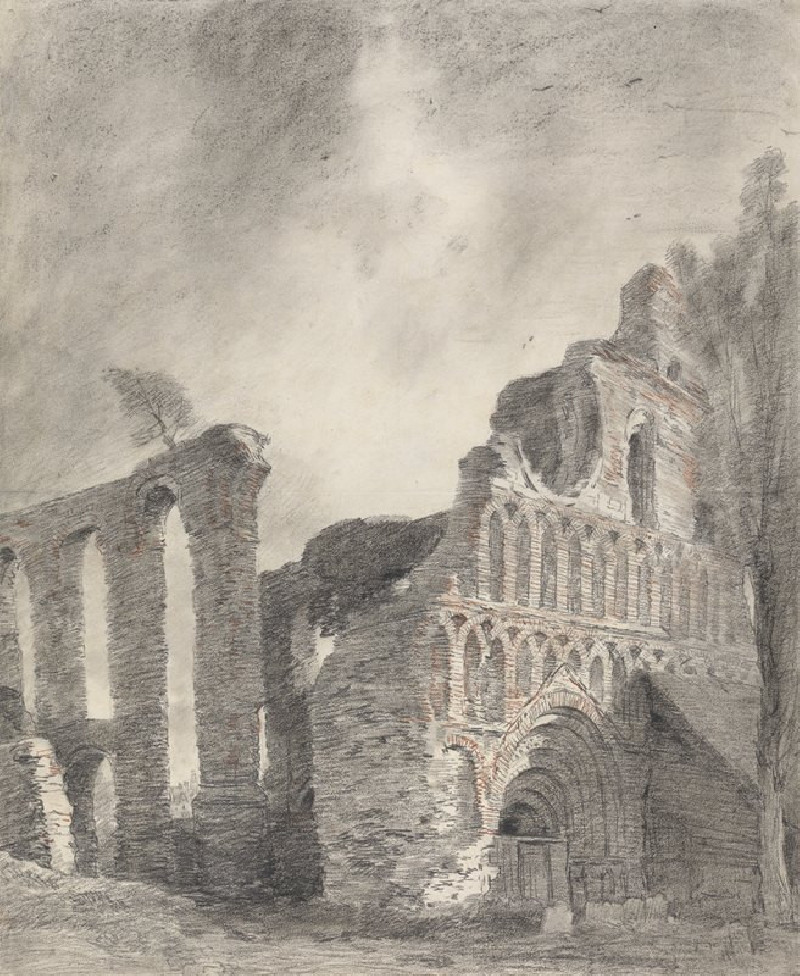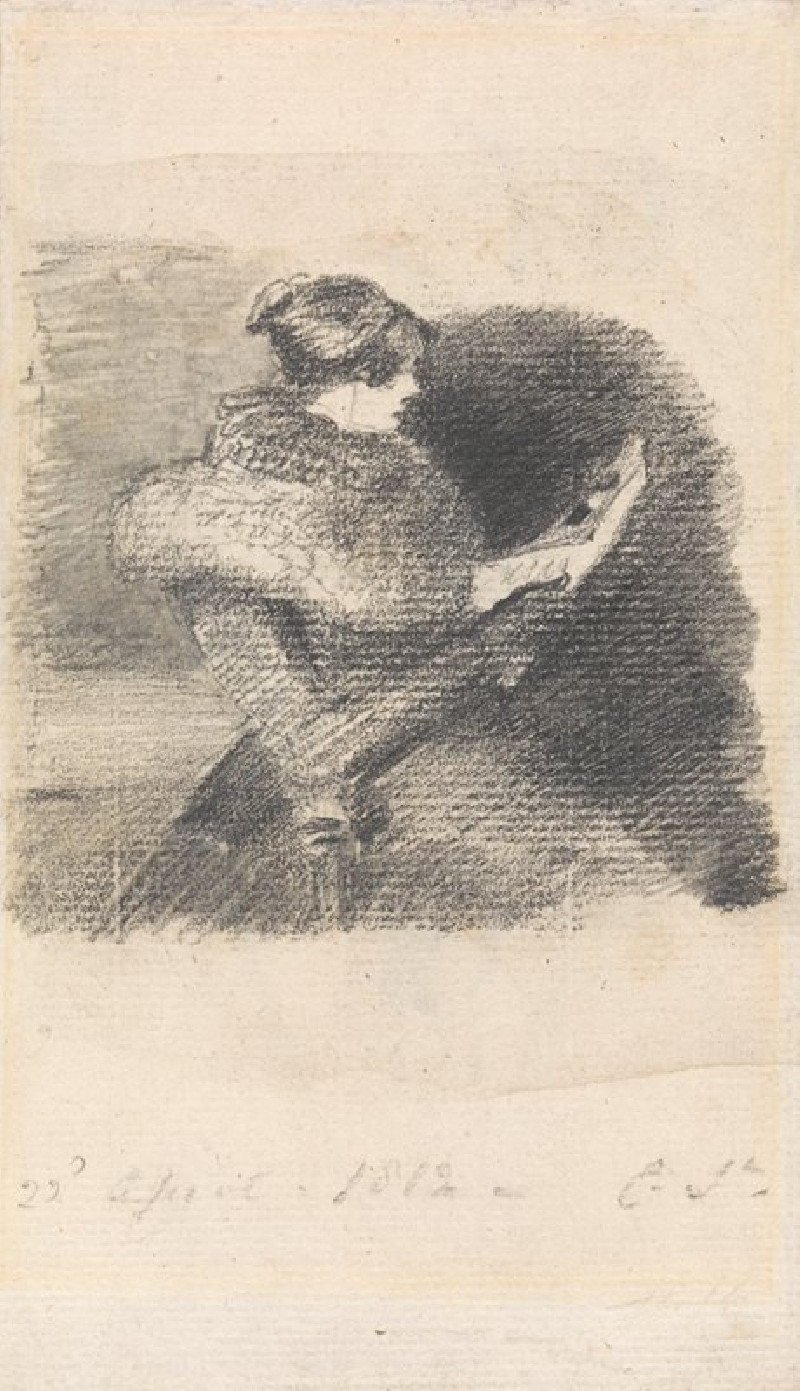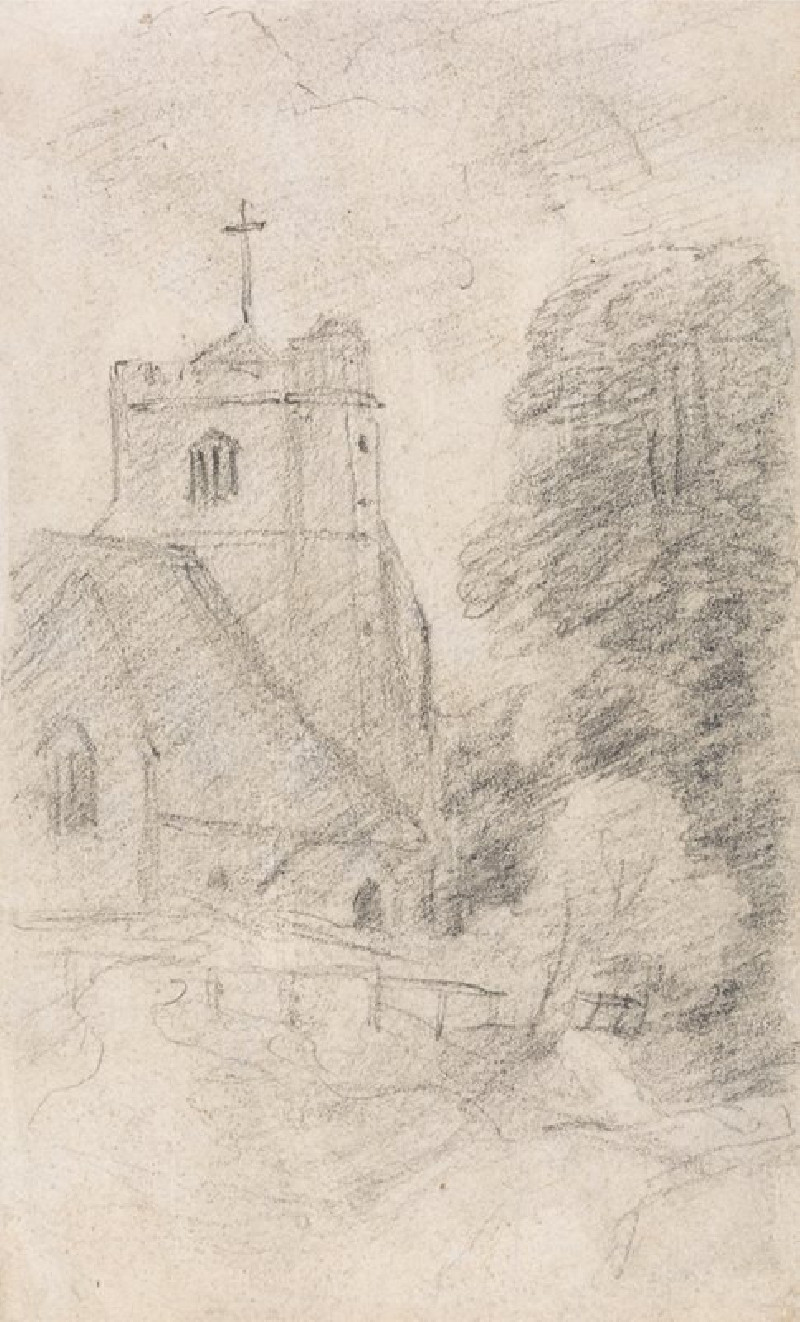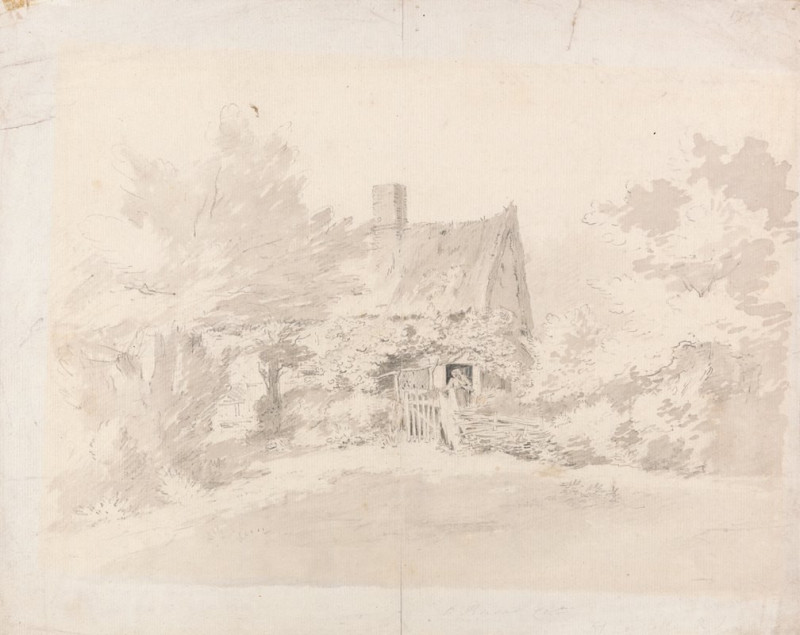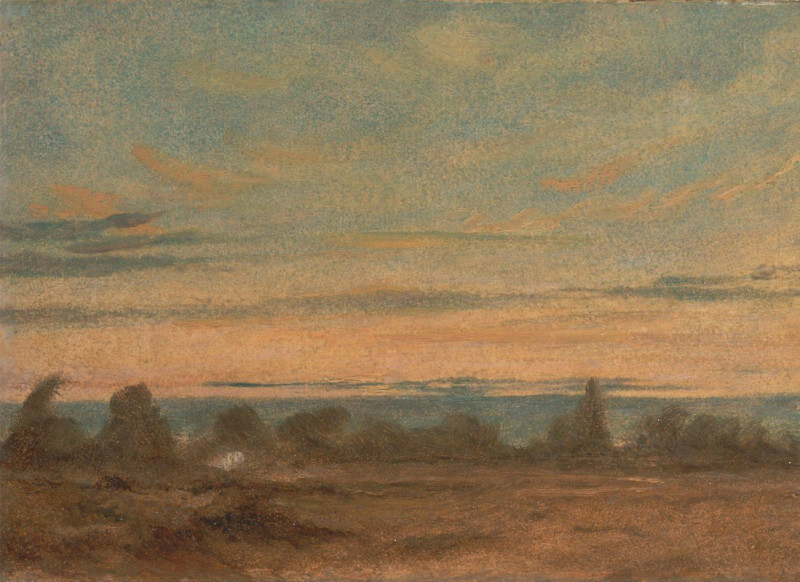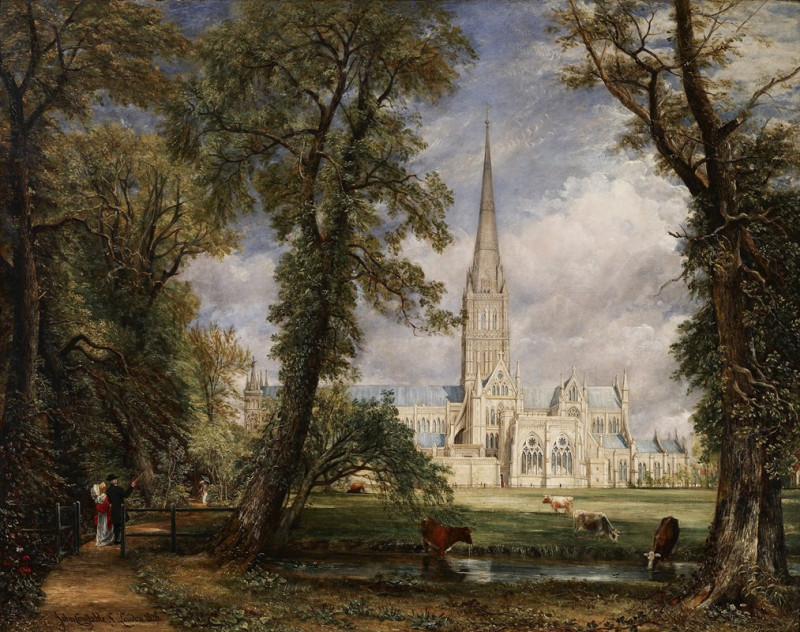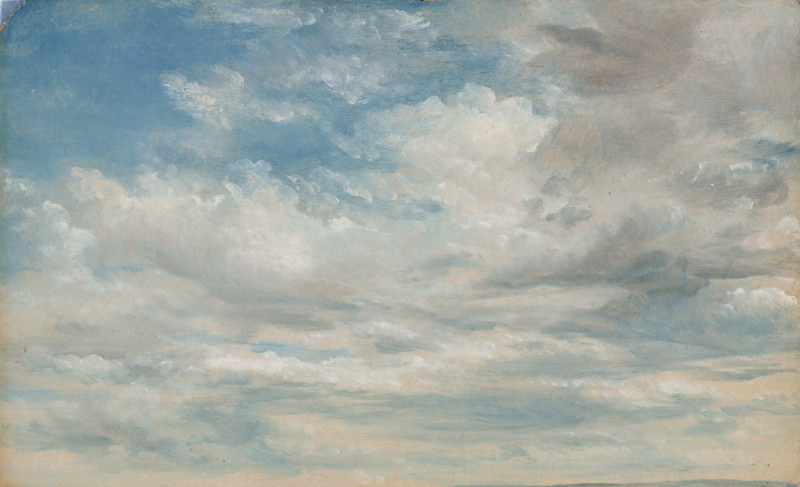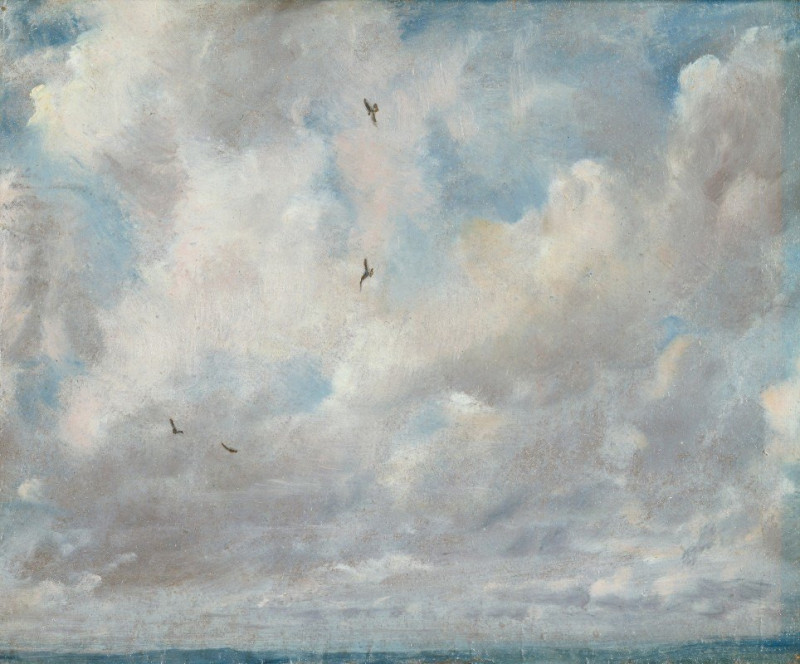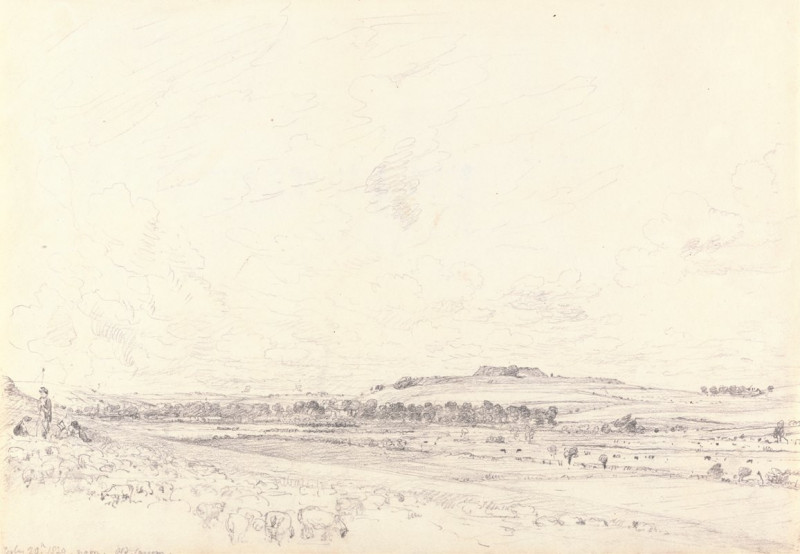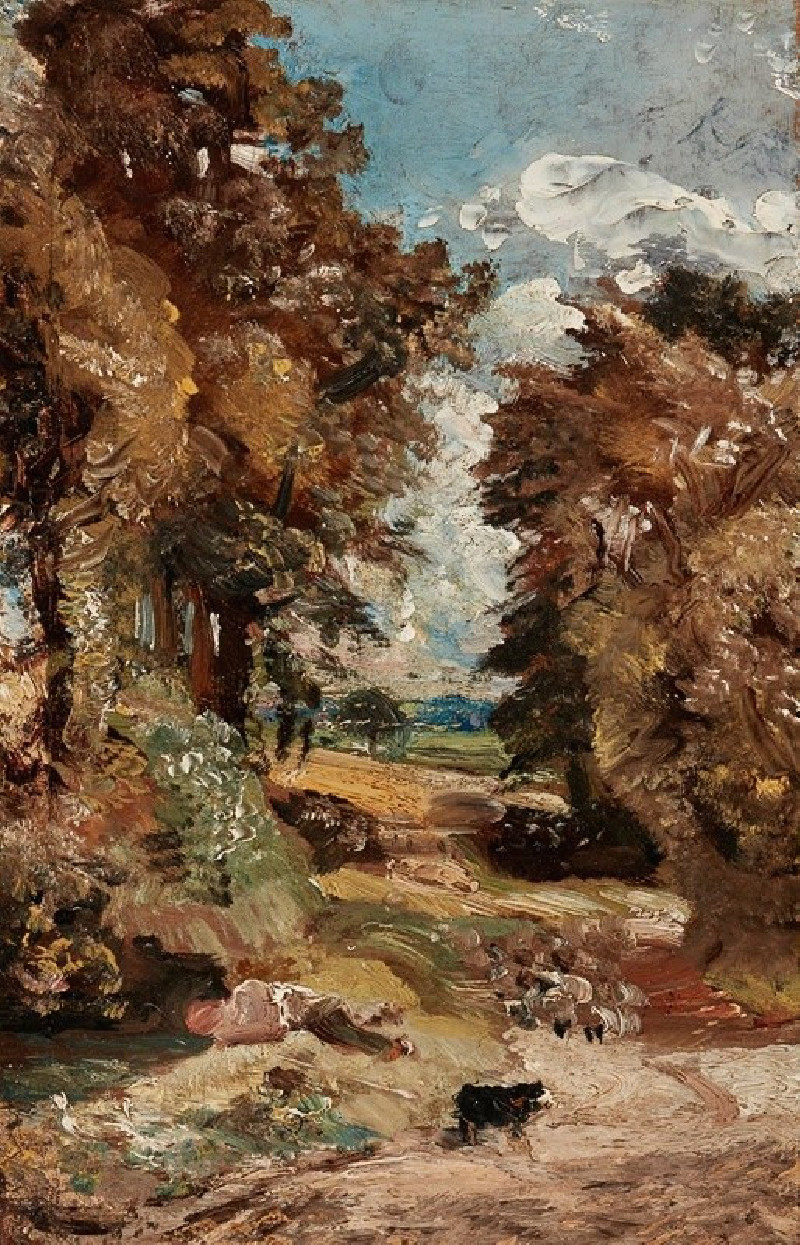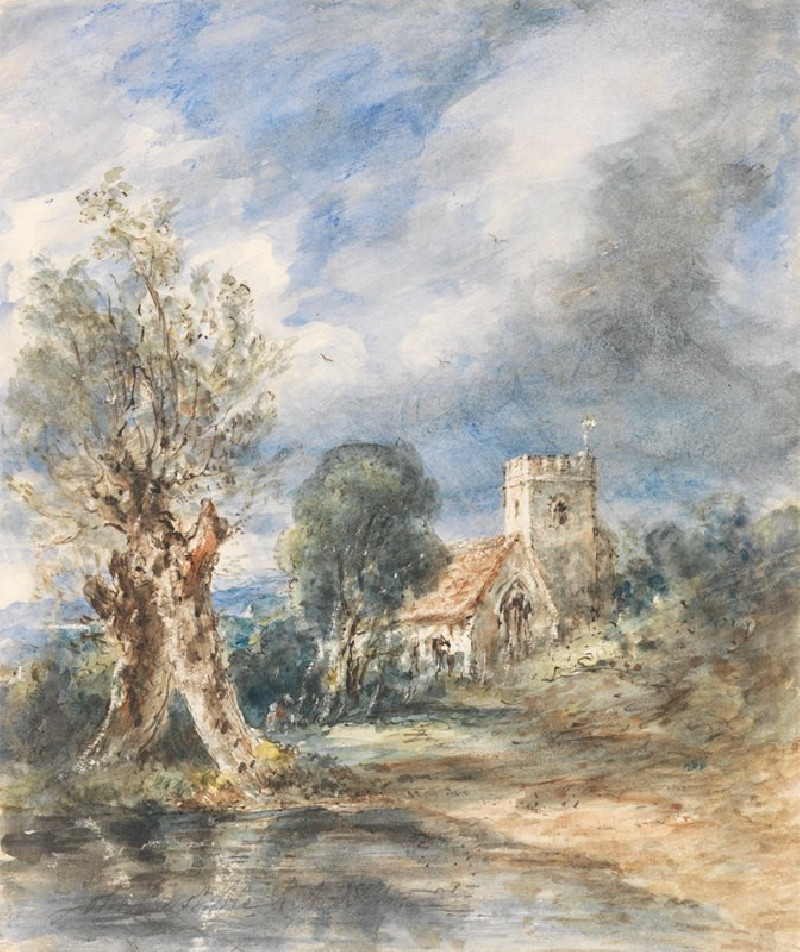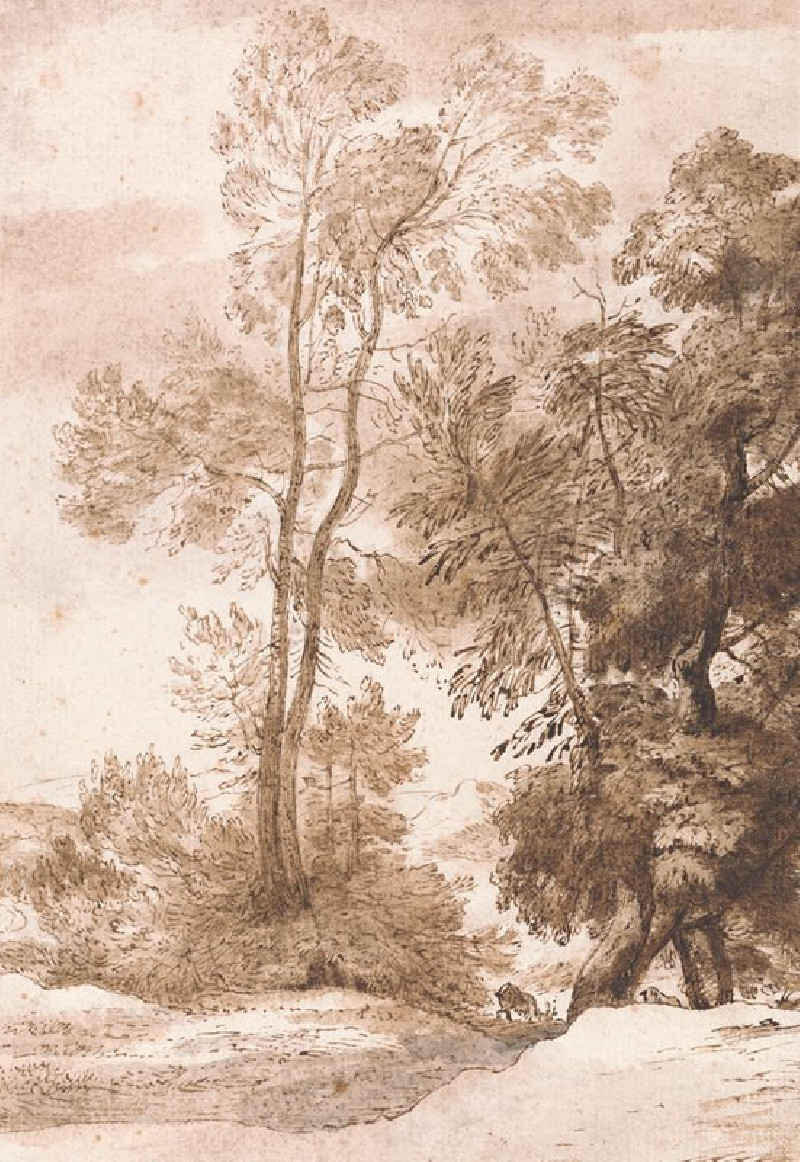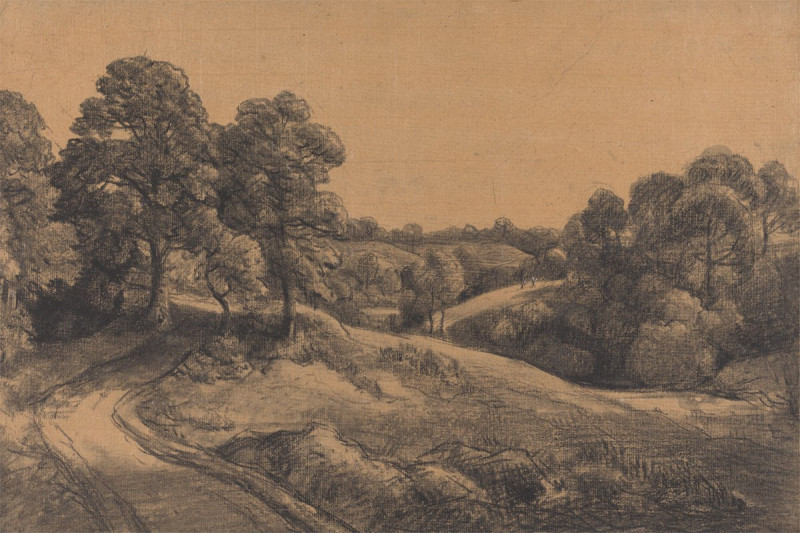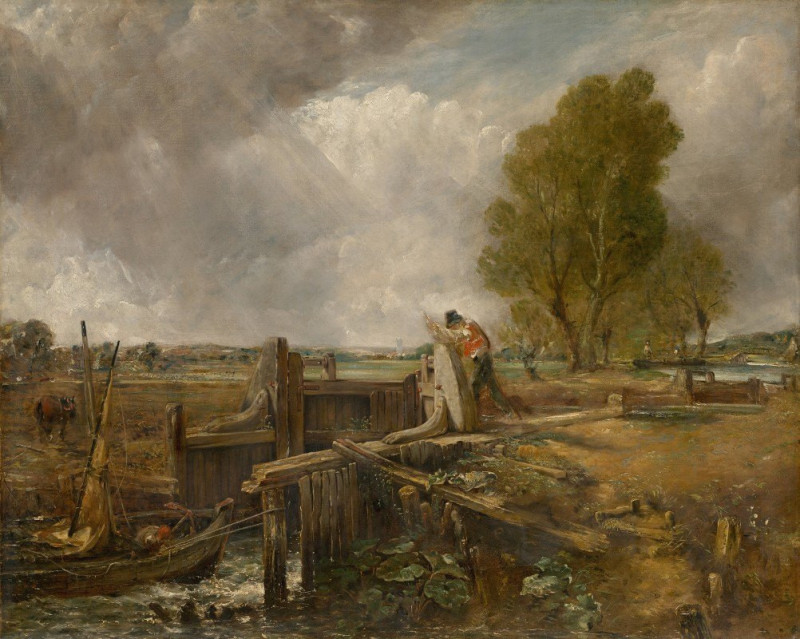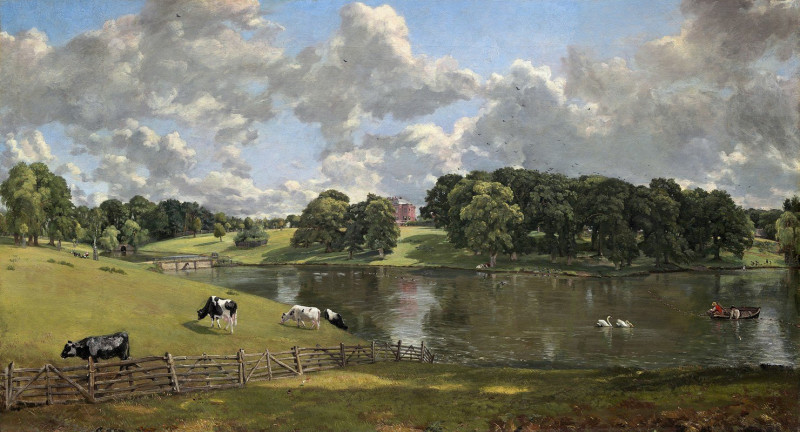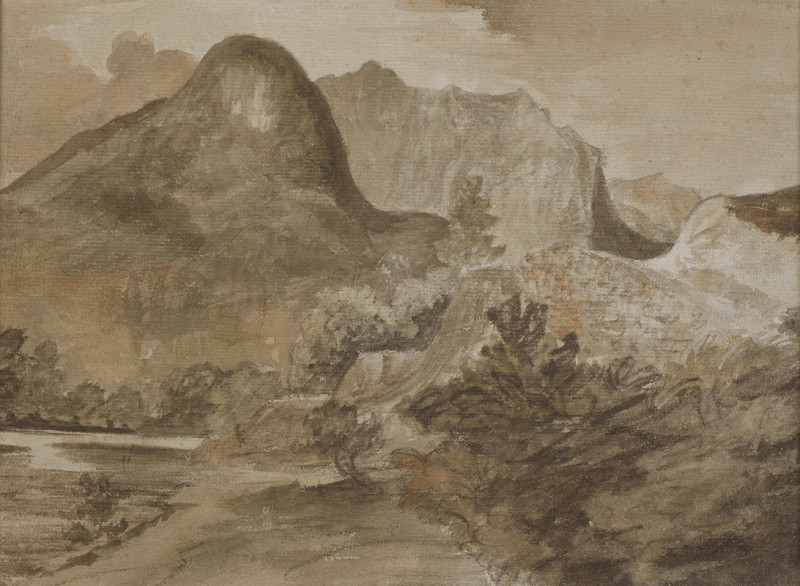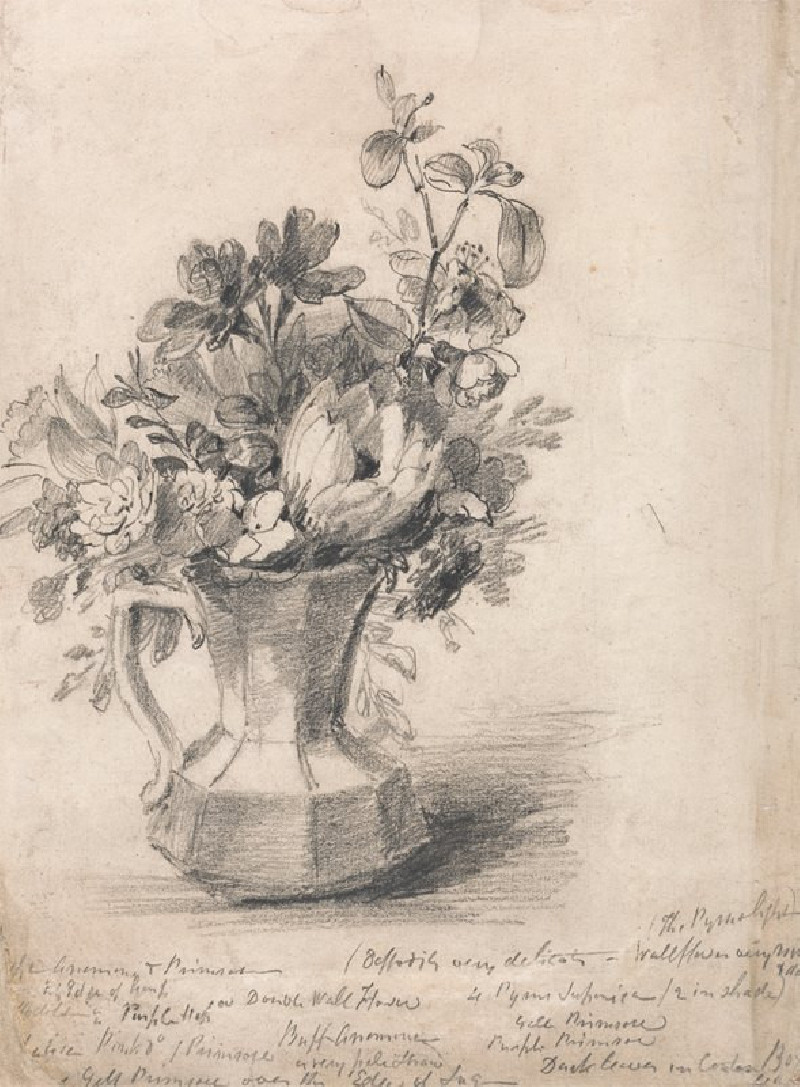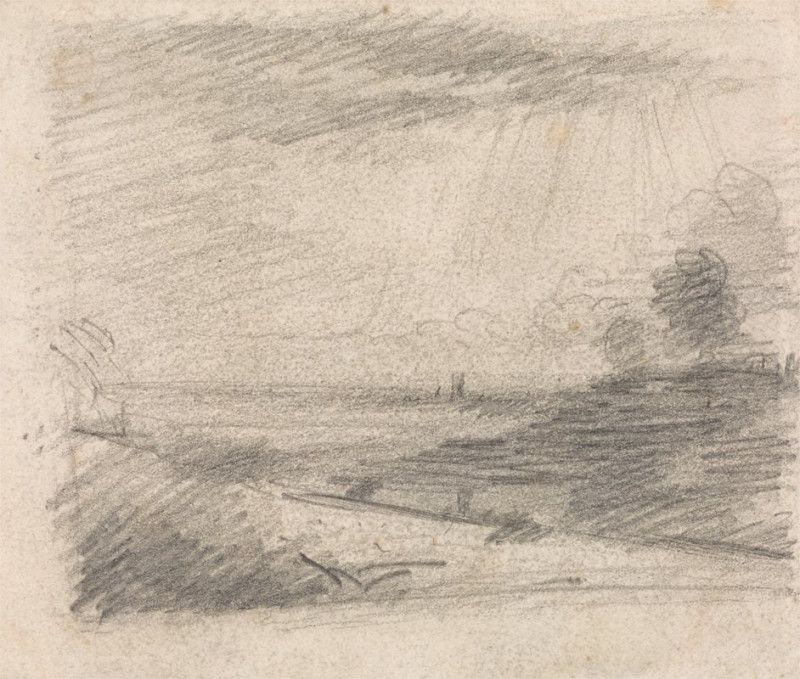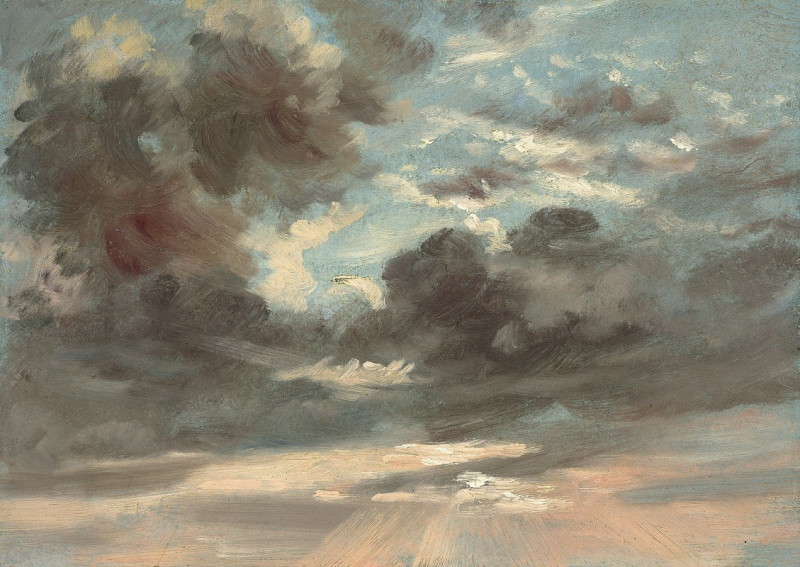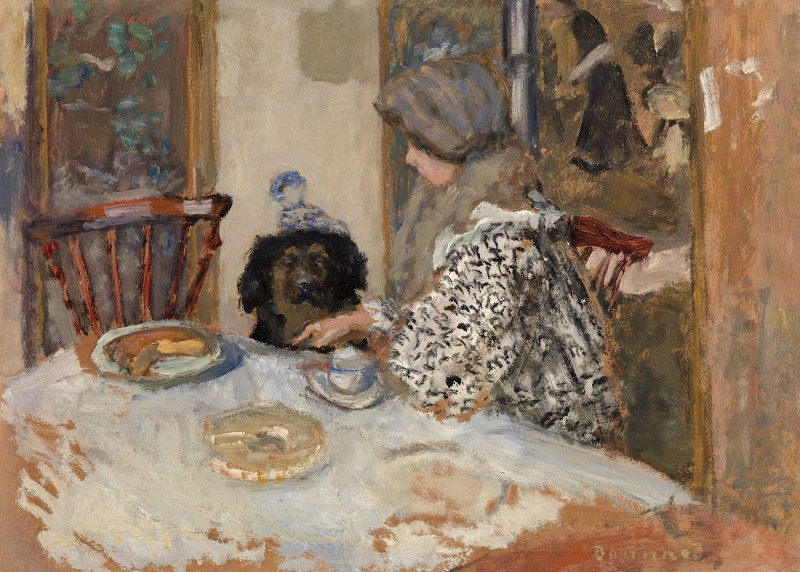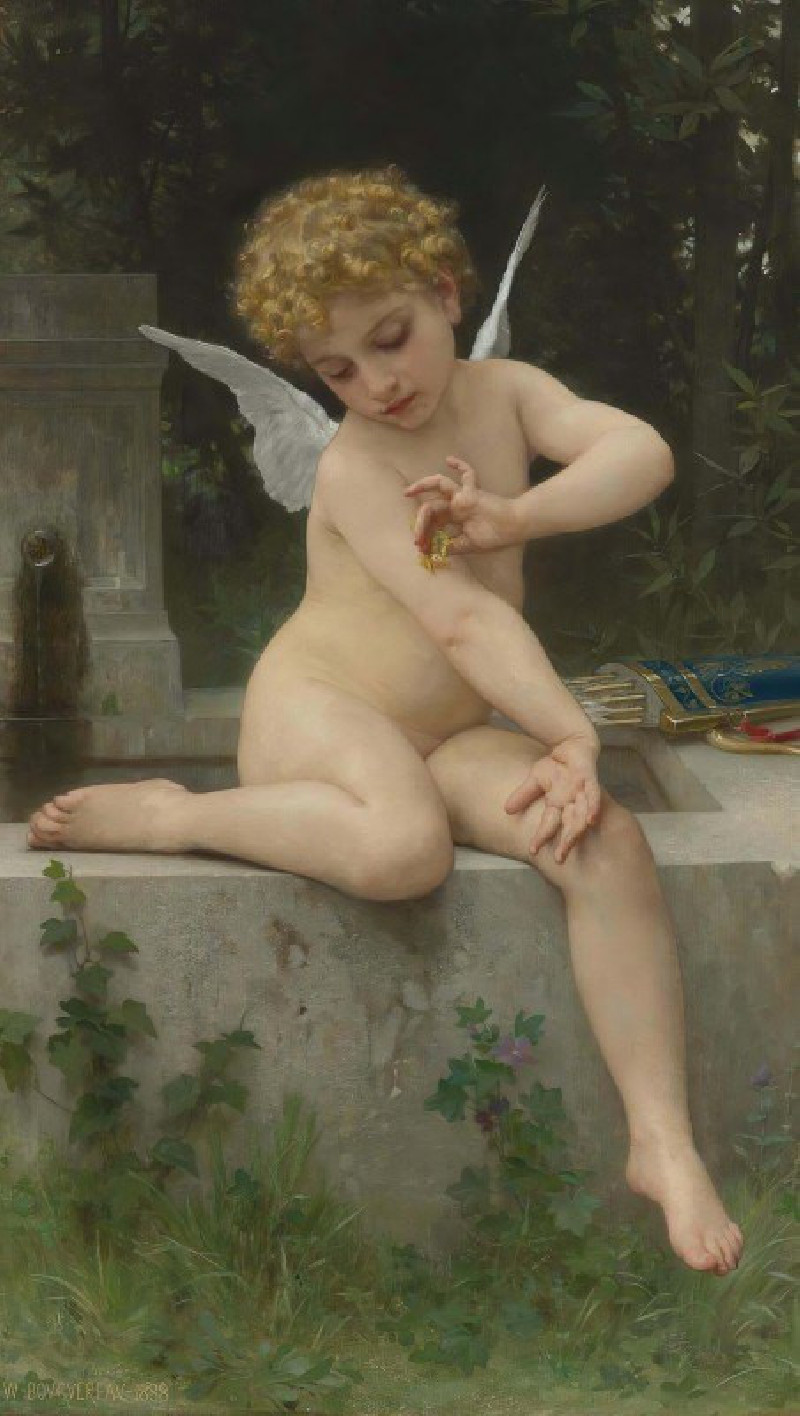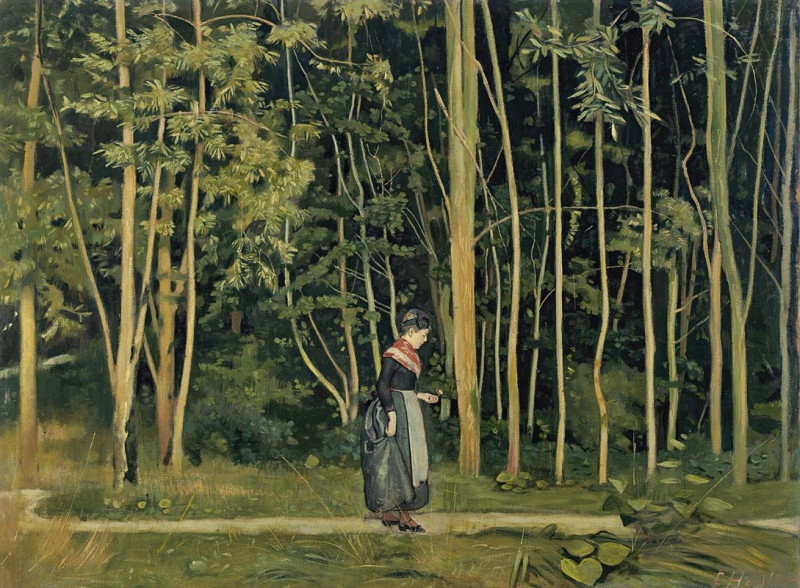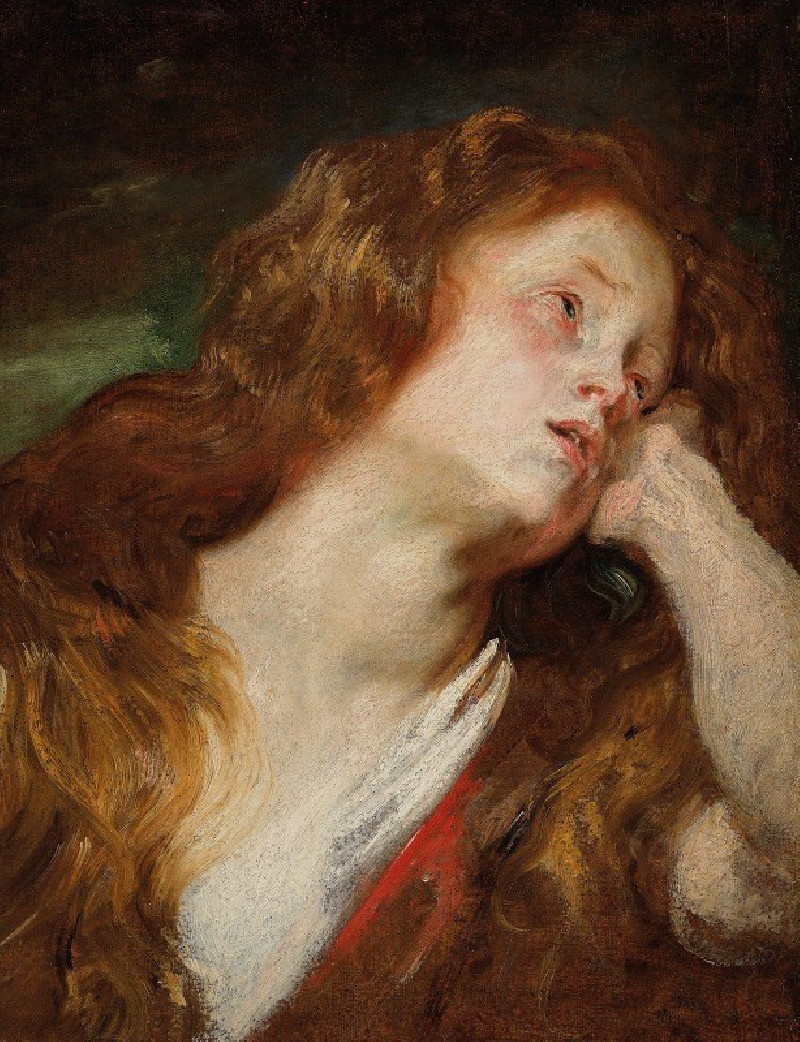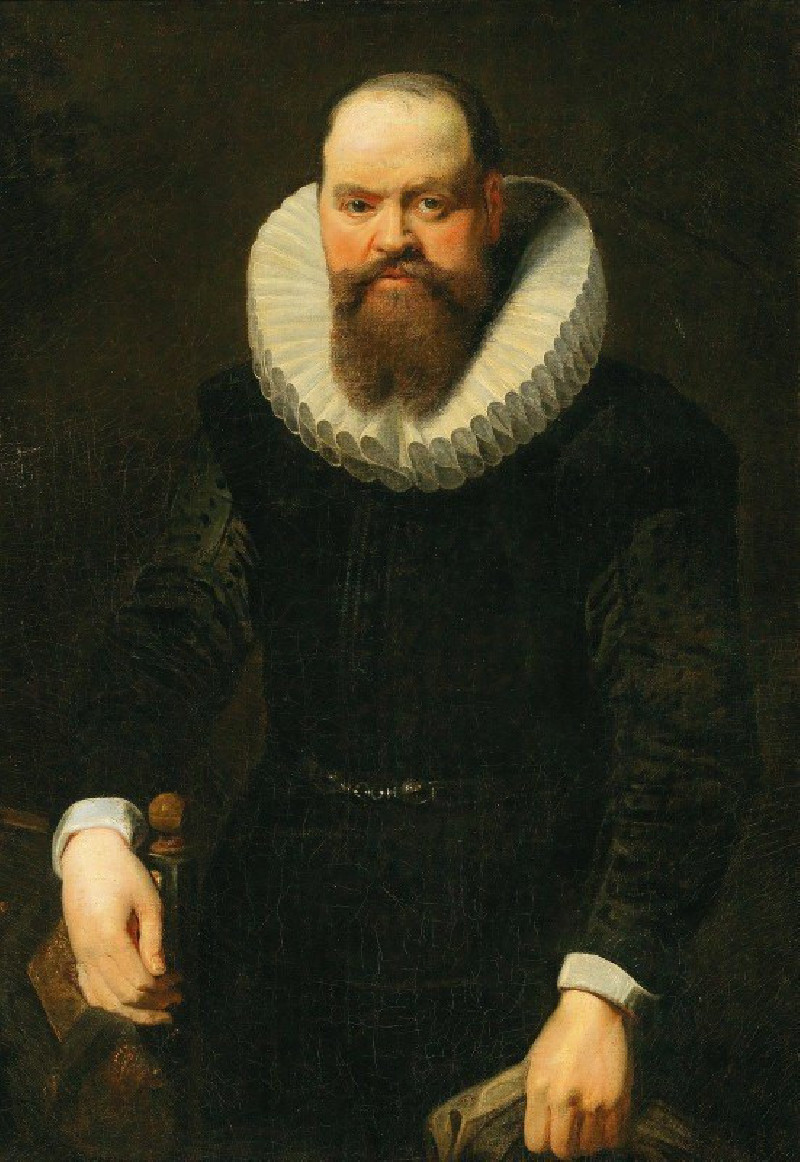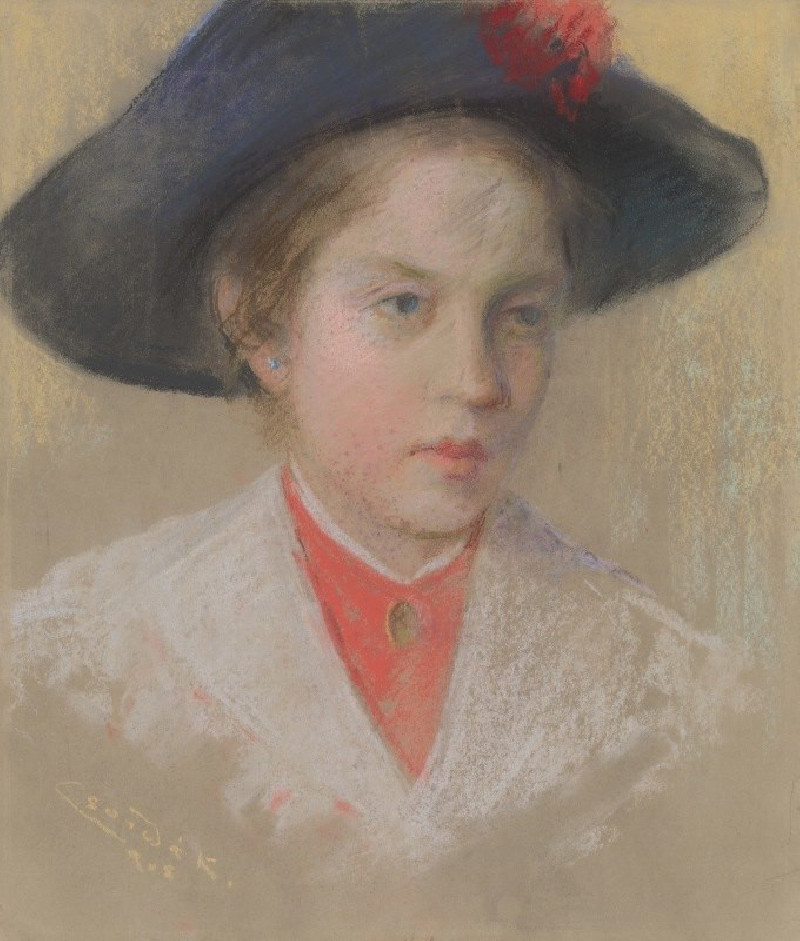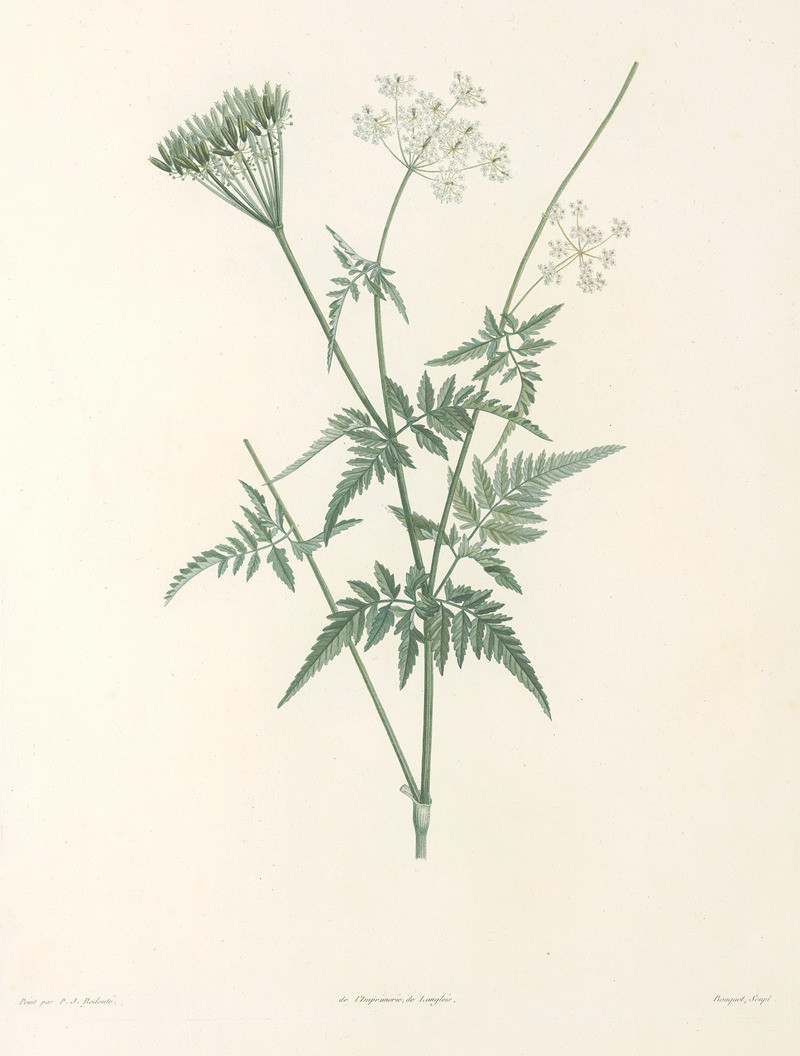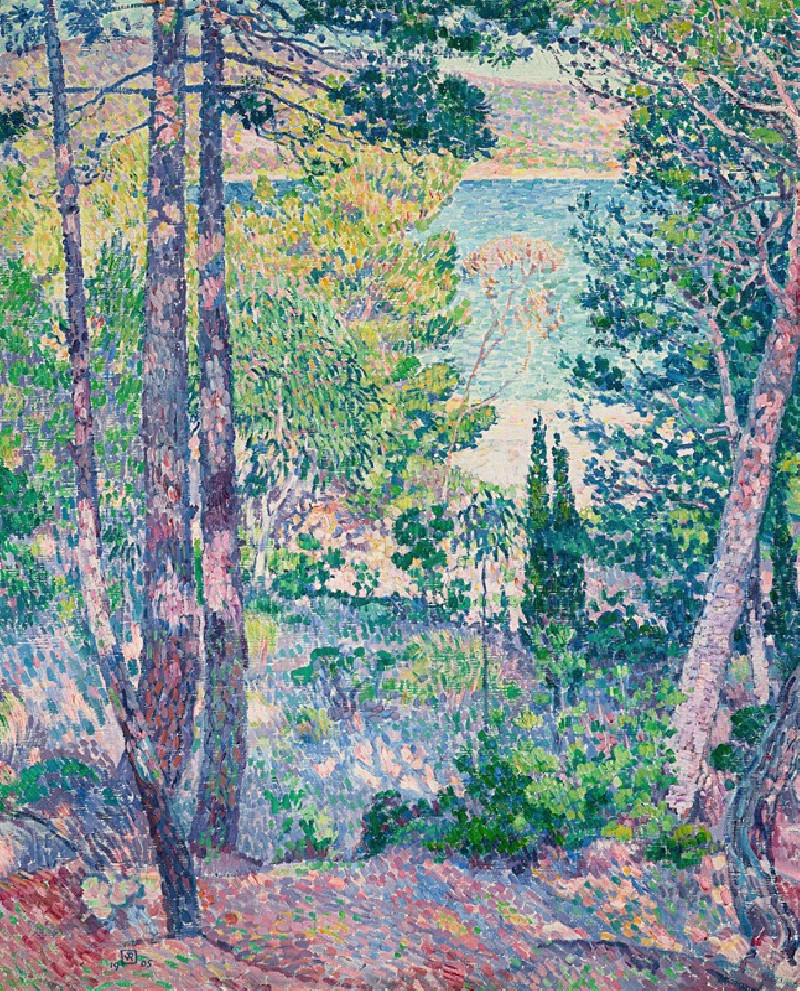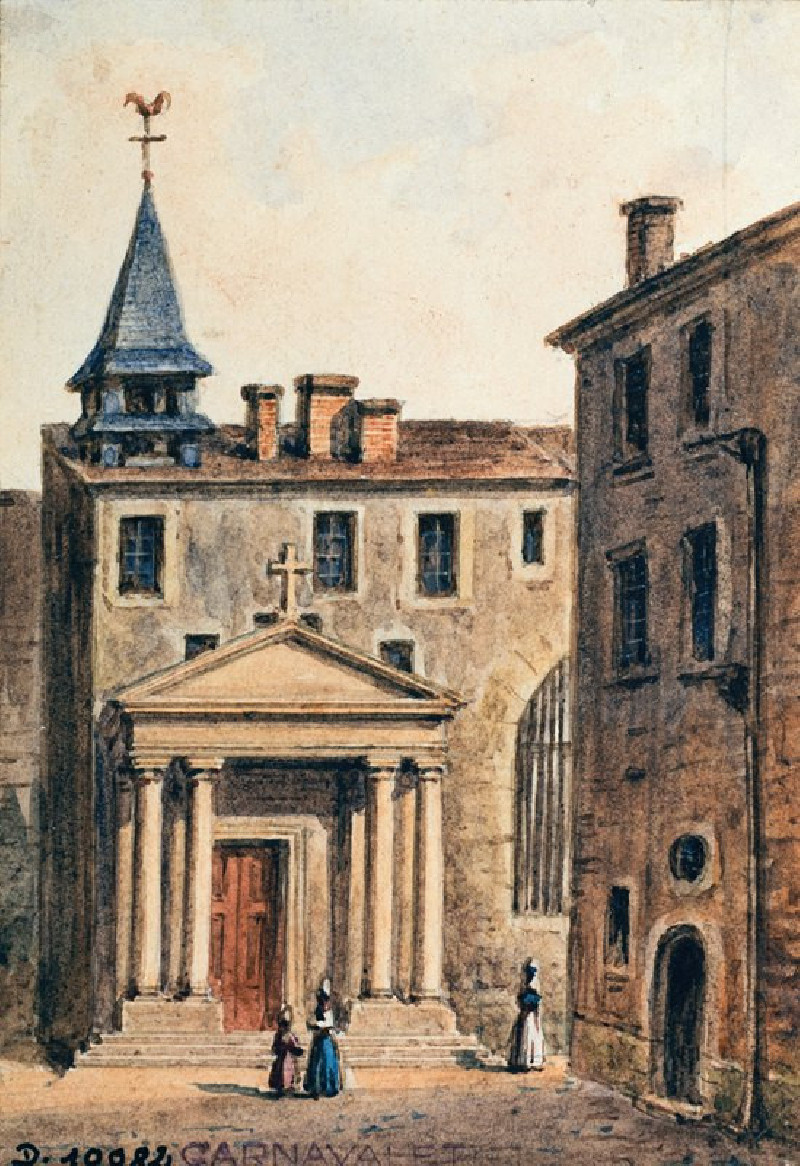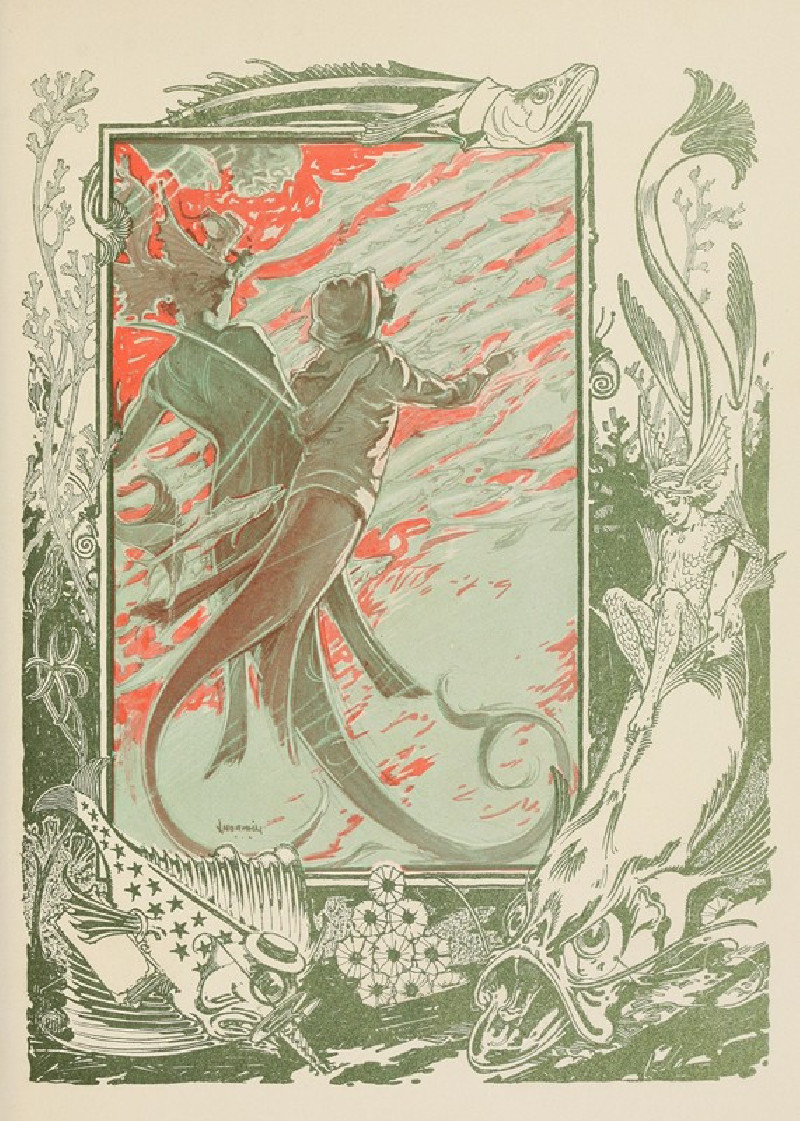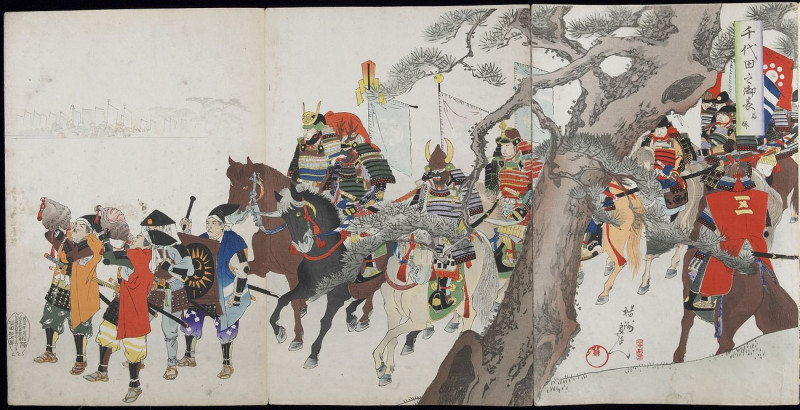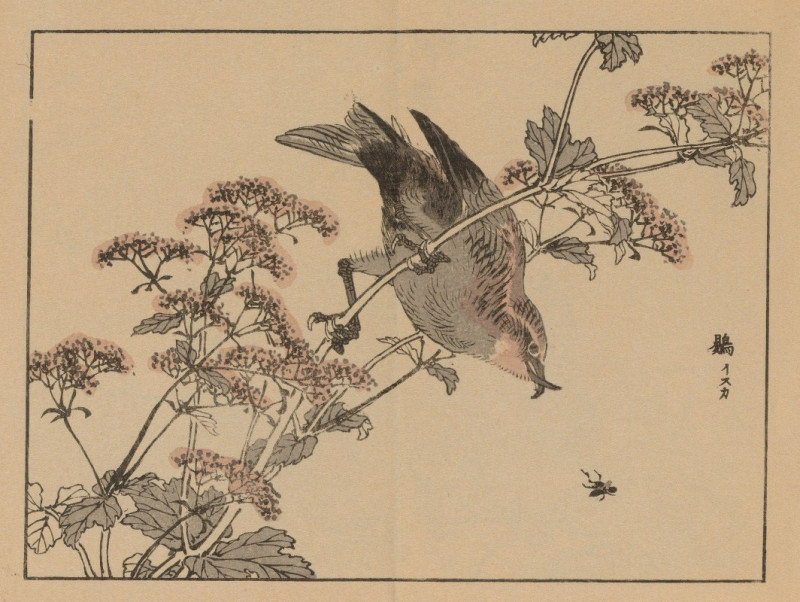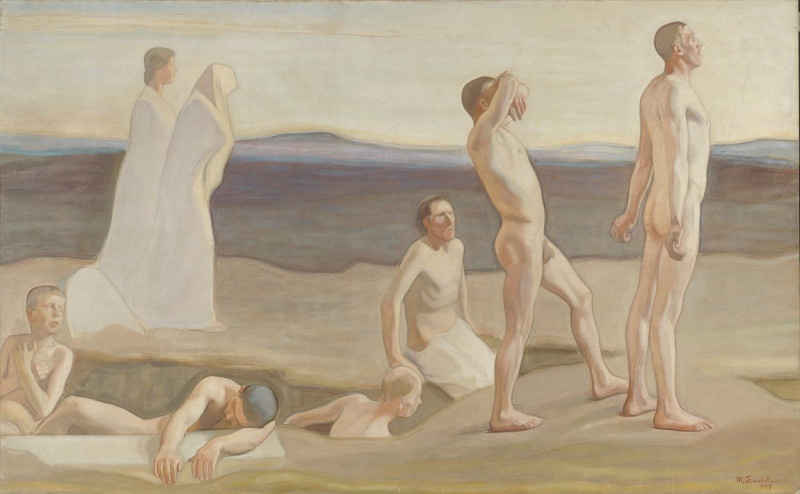Harnham Bridge, Salisbury (1821)
Technique: Giclée quality print
Recommended by our customers
More about this artwork
One of John Constable's captivating works, "Harnham Bridge, Salisbury," painted in 1821, presents a compelling landscape that invites viewers into a serene, picturesque environment. This enchanting painting features the tranquil Avon River gently flowing in the foreground, the surface subtly mirroring the skies and verdant banks, creating a harmonious interplay of natural elements.The composition is anchored by the structurally graceful Harnham Bridge, its stony arches elegantly spanning the river, connecting the lush countryside with the quaint buildings nestled beside it. To the right, amidst a cluster of deep greens from trees and shrubs, rises the impressive spire of Salisbury Cathedral, gracefully piercing the sky and serving as a focal point that draws the eye through the painting. This detail not only adds a deeply historical context to the scene but also showcases Constable’s love for English architecture and its integration into rural settings.Dramatic yet peaceful clouds dominate the upper section of the canvas, reflecting the often-changeable English weather, adding both a sense of impending movement and a dramatic contrast to the otherwise tranquil landscape. Below this sky, the rich texture of foliage and the play of light on leaves exhibit Constable’s skill in capturing the essence and vibrancy of nature.This artwork, with its detailed rendering and emotional depth, is a quintessential example of Constable's commitment to depicting the English countryside with authenticity and heartfelt appreciation. It invites viewers to pause and reflect on the timeless beauty of natural landscapes, highlighting why Constable remains one of the foremost masters of landscape painting.
Delivery
Returns
John Constable RA was an English landscape painter in the Romantic tradition. Born in Suffolk, he is known principally for revolutionising the genre of landscape painting with his pictures of Dedham Vale, the area surrounding his home – now known as "Constable Country" – which he invested with an intensity of affection. "I should paint my own places best", he wrote to his friend John Fisher in 1821, "painting is but another word for feeling".

